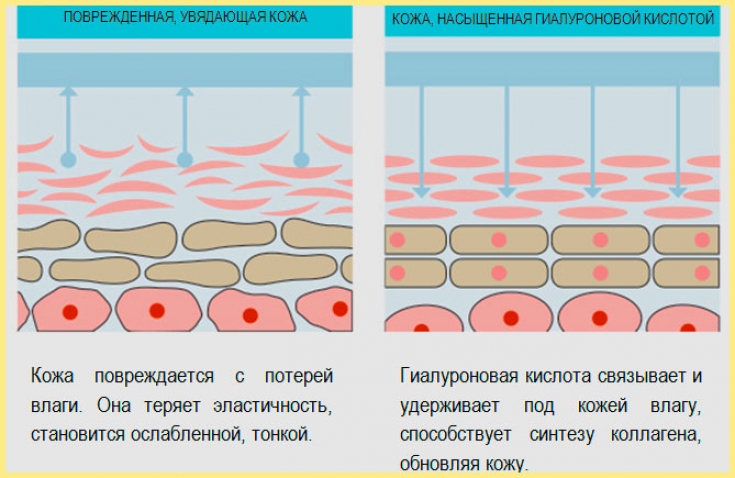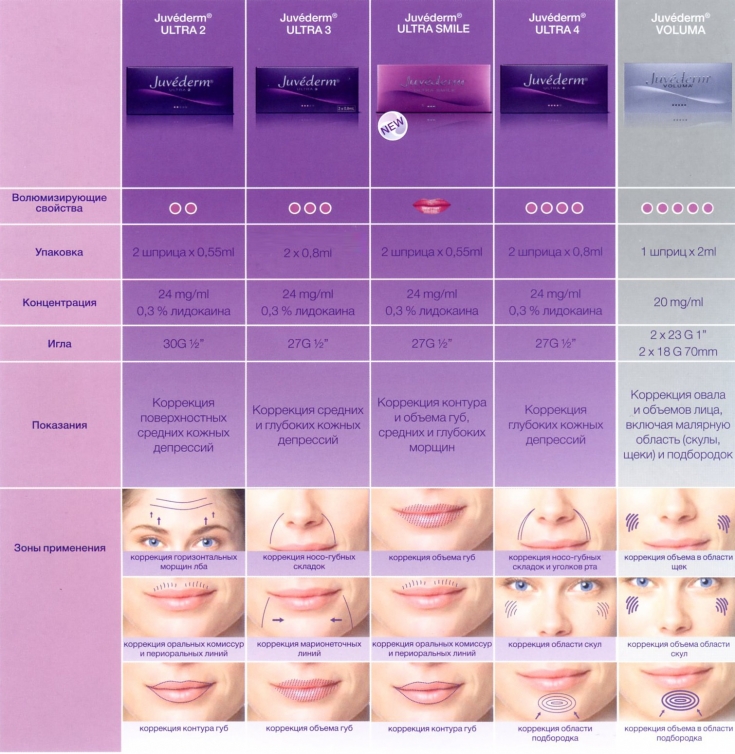The modern market of aesthetic medicine presents a huge arsenal of dermal fillers. They have a different composition and, accordingly, special physical and chemical characteristics.
Fillers are differently integrated into tissues, as a result of which they can have both a positive rejuvenating effect and lead to the development of fibrosis and other complications.
At estet-portal.com read about the histological aspects of the use of fillers and what properties of hyaluronic acid based dermal fillers ensure their perfect integration into tissues.
Clinical trials: features of the use of fillers
A number of dermal fillers have been clinically tested in the United States, during which their biocompatibility and drug residence time in tissues were investigated.
Histological analysis showed that collagen-based fillers undergo phagocytosis within 6 months, and hyaluronic acid-based fillers remain in tissues for up to 9 months.

Silicone oil integrates into the tissues, however, due to its use, a chronic foreign body rejection reaction occurs.
Dermal filler based on a suspension of polymethyl methacrylate microspheres undergoes encapsulation by connective tissue in a short time.
The use of calcium hydroxyapatite practically does not cause an inflammatory reaction, and the filler itself is completely absorbed within 12 months.
The article was written on the recommendations of Irina Makarchuk - candidate of medical sciences, dermatovenereologist, cosmetologist, assistant of the department of histology of VNMU. N.I. Pirogov, chief physician of the beauty and harmony center Beautycom (Vinnitsa), certified trainer of AllerganUkraine and medical adviser of Allergan Medical Institute.
Main properties of an ideal dermal filler
What properties should an ideal dermal filler have?
The filler must:
• have high biocompatibility;
• be safe;
• remain stable at the injection site;
• maintain its volume, but at the same time remain pliable;
• do not cause the formation of tubercles and subsequent granulomas;
• induce minimal inflammatory response.
Thus, hyaluronic acid based fillers such as Juvederm® from company "Allergan". They remain in the tissues for a long time, but at the same time undergo complete resorption. These fillers are extremely safe and have virtually no side effects.
Read also: Specialists' Choice: Why Doctors Prefer Hyaluronic Acid Fillers

After the injection of a filler based on hyaluronic acid, a minimal inflammatory reaction to the foreign body was observed locally. Gradually, the degradation of the filler occurred under the influence of macrophages, which finally ended 9 months after its introduction.
After the application of the hyaluronic acid filler, no proliferation of connective tissue was observed histologically, however, the number of fibroblasts around the injection site slightly increased.
Thus, the use of a hyaluronic acid-based filler does not cause an inflammatory reaction, the formation of severe fibrosis, the formation of granulomas, infiltration by immunocompetent cells and activation of the cell apoptosis process.
The unique — the secret of the effectiveness of fillers based on hyaluronic acid

The choice of dermal filler depends on the individual needs of the patient. Naturally, at this stage, preference should be given to the most studied and safe fillers — based on hyaluronic acid, such as Juvederm® dermal fillers, for example; from
company "Allergan". They are perfectly integrated, and allow you to achieve a long-term correction result. Moreover, these fillers contain lidocaine, which allows you to make the procedure as comfortable as possible for both the doctor and the patient.






